How to get a great DSLR or mirrorless camera for under $500
With the right tactics, you can pick up a $500 camera bargain
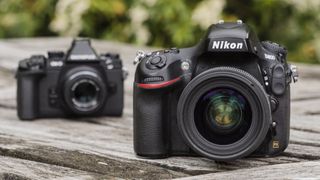
Photography is an expensive hobby, but that doesn't mean you have to sell the family pet in order to fund a good camera. These days, even a relatively limited budget of $500 can get you a smartphone-beating photographic companion – as long as you know where to look and what you're looking for.
That's where we can help. We spend large amounts of time scouring the internet for camera bargains and have developed a sixth sense for the ebbs and flows of the photography world's various promotions and deals. They don't always run like clockwork, of course, and buying the right camera is still more important than finding the best deal.
But if you follow the tips below and apply them to your particular wants and needs, your chances of getting a good sub-$500 camera will spike sharper than a cryptocurrency rebound. Here are our best tips on snagging a camera bargain, whatever kind of photography or video you're looking to shoot.
1. What do you want to shoot?
Every camera is a compromise – yes, even the ridiculously good Nikon Z9. The most important part of buying a camera is deciding the kind of things you're most likely to shoot. Do you want to photograph family portraits or sharpen your street snapping? Or perhaps you'll be shooting mostly video with stills on the side?
Answering these questions isn't the most fun part of snagging a camera bargain, but it is crucial for picking the right one for you. After all, buying a specialist tool that's right for the job is the best way of wringing every last drop from that $500 budget.
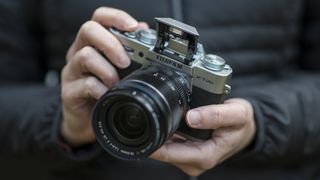
We've rounded up some camera suggestions below, many of which appear in our guide to the best cheap cameras, that are particularly well-suited to some common shooting styles. It's far from an exhaustive list of options, but it could give you an idea of the kinds of features to consider.
- Compact travel zoom: Panasonic Lumix ZS100 / TZ100
- Street photography: Fujifilm X-T20 (used)
- Action camera: GoPro Hero 10 Black
- Beginner film camera: Canon AE-1
- Vlogging camera: DJI Pocket 2
- Instant camera: Polaroid Now+
- Learner DSLR: Canon EOS Rebel T7 / EOS 2000D
2. Consider buying used
With mirrorless cameras shifting towards the premium end and many of the best beginner DSLRs now discontinued, it's becoming increasingly difficult to find a new, current camera for under $500.
Get the best Black Friday deals direct to your inbox, plus news, reviews, and more.
Sign up to be the first to know about unmissable Black Friday deals on top tech, plus get all your favorite TechRadar content.
On the plus side, the refurb and second-hand market has arguably never been more buoyant – and with today's mirrorless cameras increasingly reaching the point of diminishing returns, there are some real bargains to be found in buying used models from previous generations.

For an in-depth guide to buying used, check out our how to buy a second-hand DSLR or mirrorless camera. Want the short version? If you're buying privately, check the camera's 'mileage' using sites like Camera Shutter Count, see it in person if you can, and check to see if it's been logged on Stolen Camera Finder. DSLRs like the Nikon D3500 and Canon EOS Rebel SL3 / EOS 250D are ones to watch for second-hand value, as are mirrorless cameras like the Fujifilm X-T2.
That said, it is certainly worth considering refurb stores like Back Market and second-hand marketplaces like MPB, as well as long-standing stores like B&HPhoto, Adorama, and KEH (for US readers) and Jessops, London Camera Exchange, and Park Cameras (if you're in the UK). The prices might be slightly higher than buying from a private seller, but you'll often get the benefit of a six-month warranty (or longer).
3. Start with lenses
Looking to buy an interchangeable lens camera? Firstly, consider whether you really need to the ability to change lenses.
DSLRs and mirrorless cameras are great for flexibility and future-proofing – for example, if you find that you're particularly enjoying a certain style of photography (or video), you can invest in a specialist lens at later date. Then again, many people ultimately never venture beyond their camera's kit lens, which arguably defeats the object of buying an interchangeable lens camera in the first place.
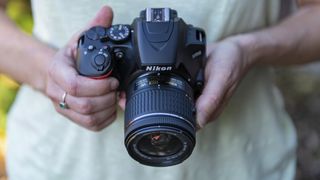
If you're set on a DSLR or mirrorless camera, though, it's well worth factoring in the cost of lenses and considering which one's the best for your style of photography. A camera might come with a tempting body-only price tag of under $500, but it's less of a bargain if the lens you want doubles the overall investment. Equally, buying a kit lens bundle isn't always the best idea, particularly if you'll be instantly looking to upgrade to something longer than its typical 3x-5x zoom, or perhaps to a superior prime lens.
Here's a quick cheat sheet for the type of lenses that are best for particular types of photography. The focal lengths below are full-frame equivalent, so you may need to convert them depending on the sensor size of the camera you're looking at. For example, on a 50mm lens on an APS-C camera is equivalent to 75mm on full-frame (a multiplication factor of 1.5x), while a 50mm lens on a Micro Four Thirds camera produces images that look like 100mm on full-frame (just use the 2x multiplication rule for other lenses).
- Travel: super-telephoto (18-300mm)
- Street: prime lens (35mm or 50mm)
- Portraits: prime lens (50mm or 85mm)
- Landscape: wide-angle zoom (10-24mm or 16-35mm)
- Sports and wildlife: telephoto zoom (100-400mm)
- Astrophotography: wide-angle prime (14mm) or zoom (14-24mm)
4. Experiment with film
Film cameras certainly aren't for everyone, particularly if you're looking for maximum convenience and pin-sharp image quality. But if you don't mind tinkering with film stocks and are looking for a tactile experience that's the polar opposite of smartphone snapping, then they're certainly worth considering.
The best bit? Despite the recent boom in analogue snapping, there are still some real classics out there for bargain price tags that are well under $500 with a prime lens.
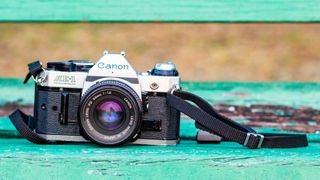
There are a few considerations to bear in mind when buying a film camera. You can read more about them in our our guide to the best film cameras, but the main ones are picking between the more mainstream SLR (Single Lens Reflex) and rangefinder formats, and also deciding whether you want a fully mechanical experience like the Pentax K1000 or a more beginner-friendly model that includes electronics, like the Canon AE-1 (above).
If you don't mind enduring their foibles, flaws and sometimes elusive film stocks, film cameras can offer a world of photographic fun for not much money.
5. Shop in the sweet spot
Mirrorless cameras offer the closest shooting experience to smartphones, thanks to their electronic viewfinders and touchscreens.
Many popular lines started in the early 2010s and are now in their fourth generation, but reached a high level of performance in their second- or third-gen when the technology's early kinks had been ironed out. This is often a great sweet spot to explore and hunt for a great sub-$500 camera, particularly well-loved used models.
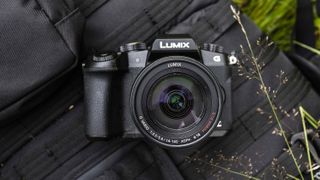
For example, we reckon some of the best-value mirrorless cameras are the Fujifilm X-T20, Olympus OM-D E-M10 Mark II, and Panasonic Lumix G80 / G85. All three pack modern shooting power into compact bodies, and including good EVFs (electronic viewfinders), touchscreens and decent autofocus performance.
If you like the sound of a 'mini DSLR', and don't mind buying second-hand, these models could all make great sub-$500 buys, particularly as they're all supported by a large range of lenses that include some budget options.
6. Buy at the right time
It's tempting to buy a camera as soon as you've tracked down the one you want, but a little patience can definitely pay. Whether you're taking advantage of seasonal offers of big shopping events like Amazon Prime Day (which typically takes place in mid-July), a healthy discount can actually bring a camera that was previously outside your sub-$500 sphere back into budget.
So what should you look out for? In the northern hemisphere, camera companies traditionally expect you to buy in early summer for the holidays, so often start their promotions in Spring (from March-June) or sometimes a little later. For example, Panasonic recently ran an excellent promotion offering free lenses with their Panasonic Lumix G9 and Lumix S5 in the UK. This means it's definitely worth checking the manufacturer's homepage to see if any cashback deals are running.
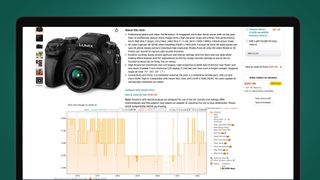
If it isn't the right time of year for seasonal promotions, fear not – another great time to pick up a camera bargain is during Amazon Prime Day (during mid-July) or Black Friday (from November 25). You can manually search retailers during the week leading up to those events, but an easier route is tracking them using free tools like Keepa and CamelCamelCamel. Enter the camera you want to track and they'll send you alerts when the price drops – or you can use the browser extensions to see price histories on Amazon, to make sure you're getting a bargain.
Lastly, you can use sites like Slickdeals (in the US), HotUKdeals (in the UK) and our own guide to the best cheap camera sales and deals to see what camera bargains are trending right now. Even if you're shopping outside a traditional deals season, some camera deals can spike if stock is being cleared or the product's recently been discontinued.

Mark is TechRadar's Senior news editor. Having worked in tech journalism for a ludicrous 17 years, Mark is now attempting to break the world record for the number of camera bags hoarded by one person. He was previously Cameras Editor at both TechRadar and Trusted Reviews, Acting editor on Stuff.tv, as well as Features editor and Reviews editor on Stuff magazine. As a freelancer, he's contributed to titles including The Sunday Times, FourFourTwo and Arena. And in a former life, he also won The Daily Telegraph's Young Sportswriter of the Year. But that was before he discovered the strange joys of getting up at 4am for a photo shoot in London's Square Mile.
Most Popular


